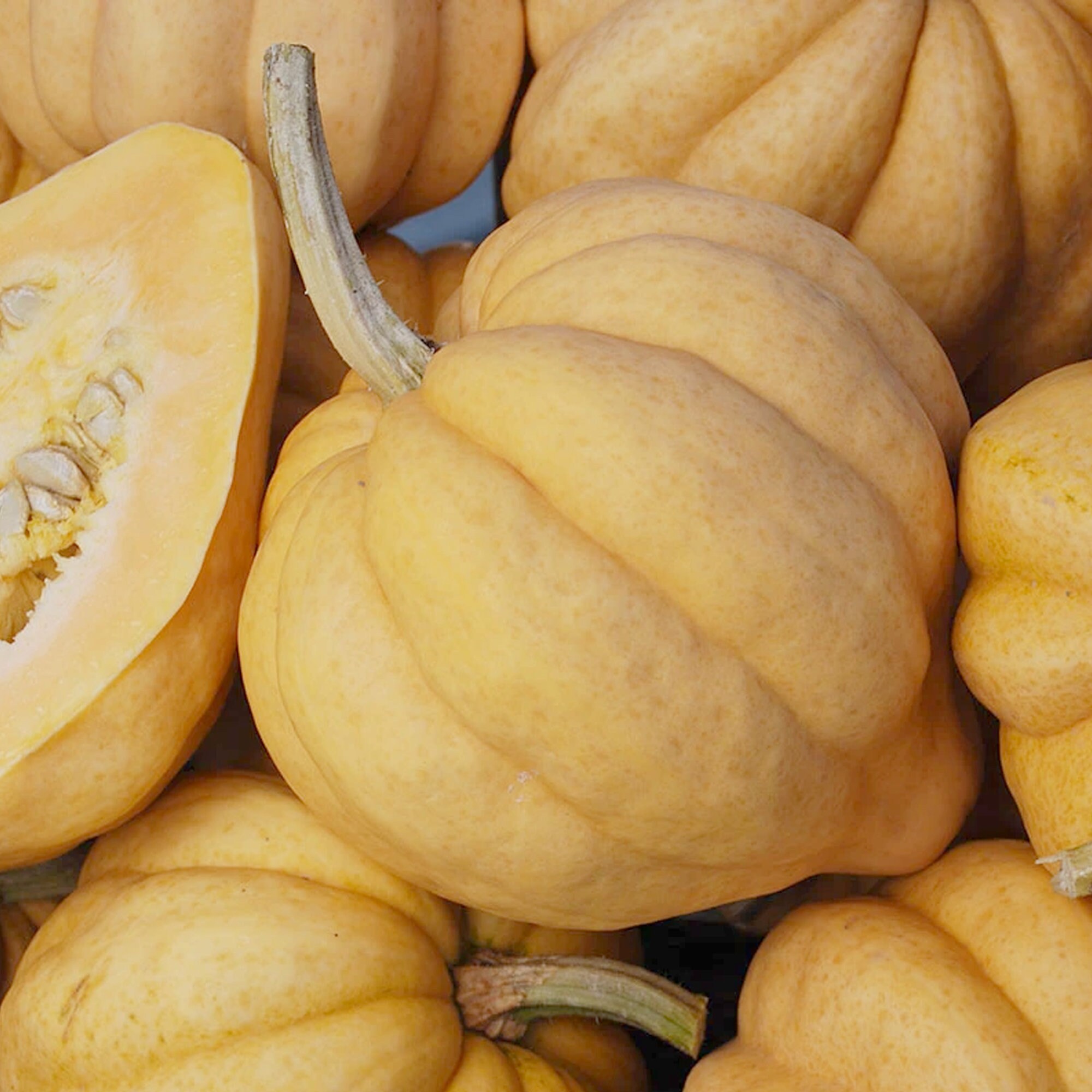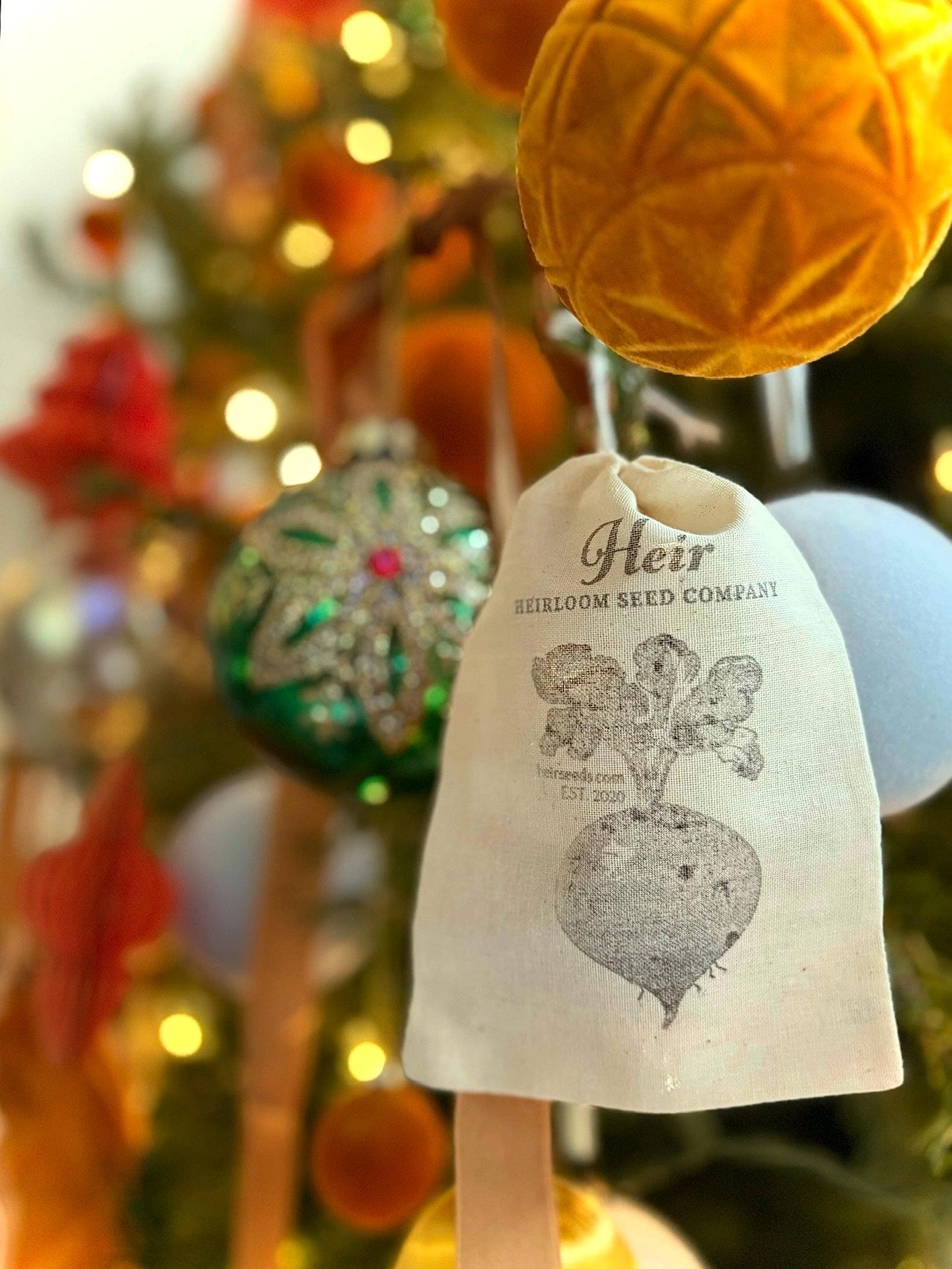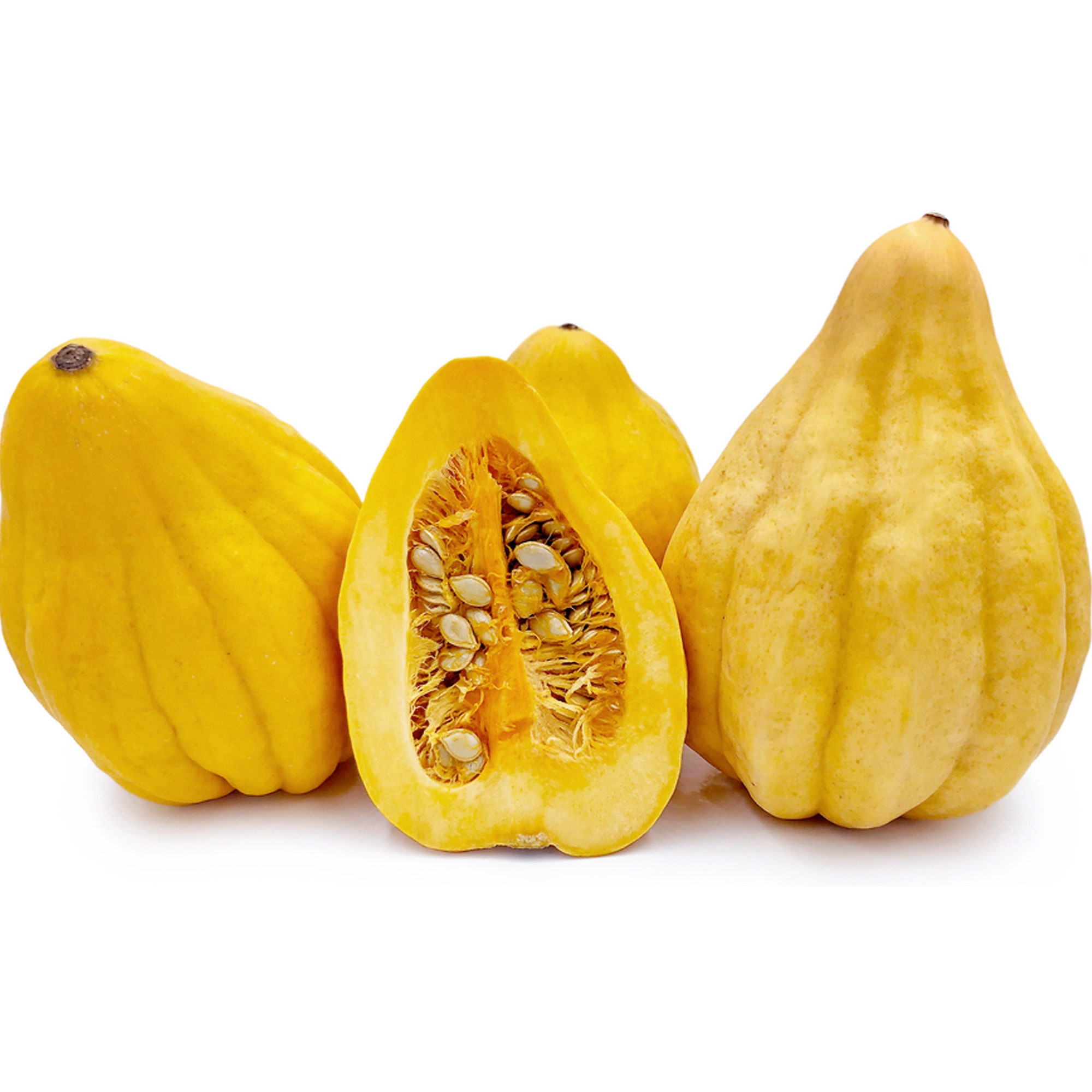Thelma Sanders Acorn Winter Squash - RARE heirloom seeds
$3.48
Also known as Thelma Sanders Sweet Potato Squash, this is a lovely little squash. It was grown for generations in Adair County, Missouri.
In spite of their southern origin they do well in northern gardens, as they are fairly quick growers. They are also known for being quite prolific, reliable and disease resistant, and also tolerant of very variable conditions. The vines do get large, but this would be a good candidate for trellising if you wanted to grow them in a somewhat constricted space, as the squash themselves are on the small size.
Most of them are the classic heart-shape of acorn squash in general, but some of them tend to be more elongated, like the one I cut for the photo above. The skin is a warm creamy yellow, much like the raw flesh. The seed cavity is neat, with the seeds very easy to remove. If you are cooking more than one squash at once it is well worth rinsing off the seeds and roasting them with a little oil and salt. (One doesn't have very many seeds, although if the oven is on anyway you may wish to find some room for them.)
The flesh is dense and flavorful when baked, and a bit on the drier side than most acorn squash. It gets compared to sweet potatoes, or chestnuts. I find them just right for cutting in half and baking one for the two of us, or cutting a larger one into smaller pieces if a number of other vegetables are to be served at the same time.
Like all squash, they should be set in a warm room to cure for 10 days before being eaten or stored for the winter. They will store best if they keep their stems, but they are inclined to come off the stems when being picked, so be careful. Use the stemless ones first. Leave them on the vine as long as you can, but they must be picked before the first frost. I've seen reports of them storing for up to 5 months or more, but in general acorn squash aren't the best for storage. I doubt I will have much in the way of personal observations to make as I expect we will eat all of ours long before the end of winter - we are already burning through them. Some people say they improve with storage, being best in the new year, but we'll be lucky to have more than one or two left by then - they are plenty good right now.
85 to 90 days
Planting Guide included. Ships in padded envelope.
Visit heirseeds.com to view our full inventory of rare heirloom seeds.
Reviews (3)
Average:
Apr 19, 2022
Excellent Item! Quality, Packed well, Shipped Fast, Highly Recommend to All!
Jan 15, 2021
Nov 8, 2020




